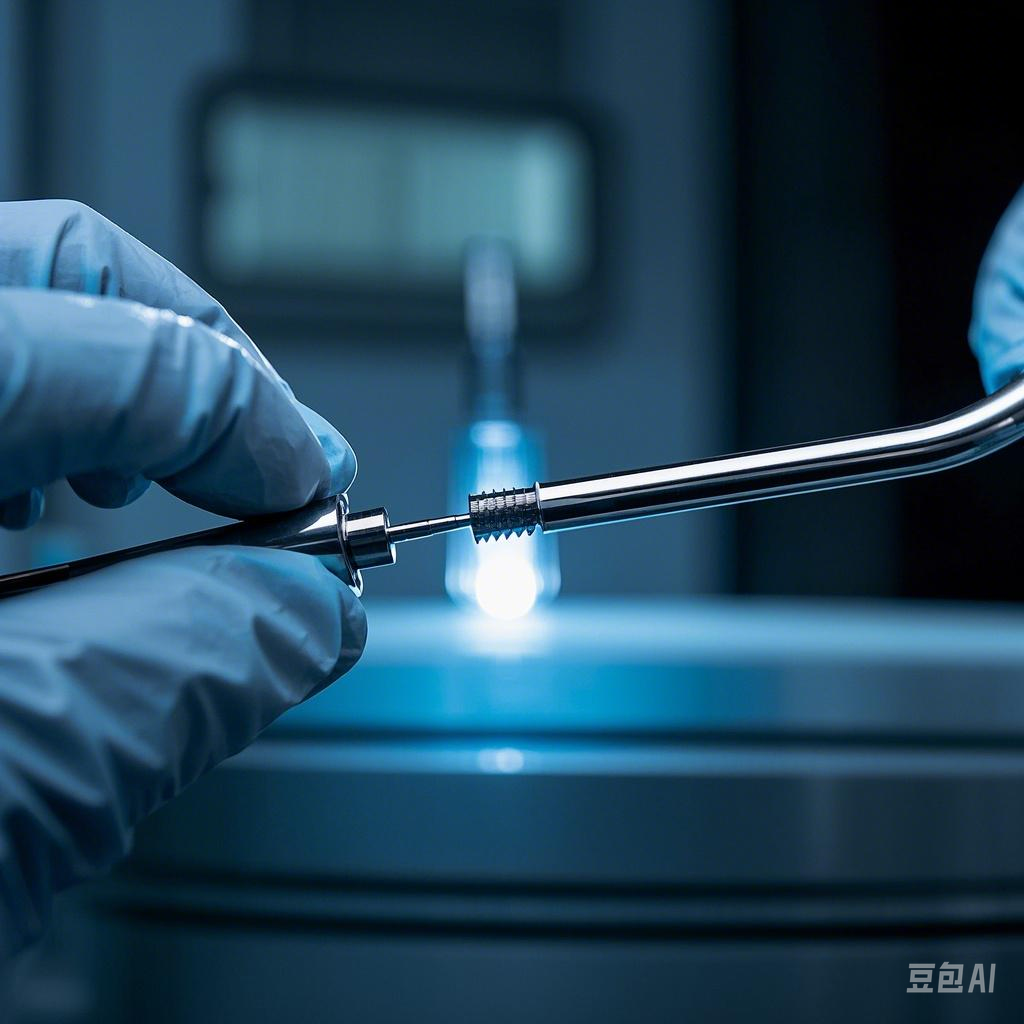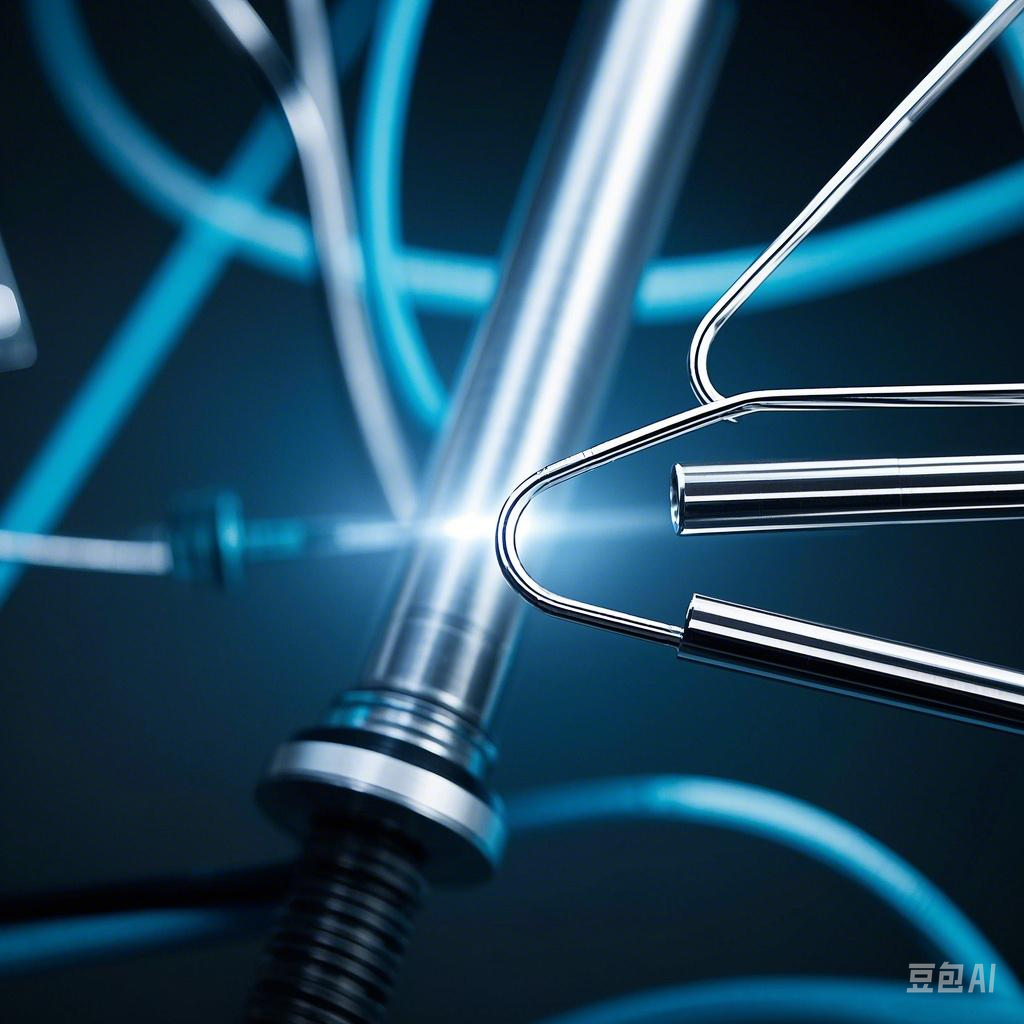What Makes NiTi Tubes a Game-Changer in Medical and Aerospace Applications

NiTi Tubes, crafted from the extraordinary material Nitinol, have revolutionized innovation in both the medical and aerospace industries. Their exceptional properties, including shape memory and superelasticity, allow them to excel in extreme conditions where traditional materials fall short. For example, Nitinol's ability to return to its original shape after deformation makes it indispensable in dynamic environments. Its biocompatibility ensures safe use in medical implants, while its corrosion resistance enhances durability in aerospace components. These attributes position Nitinol as a superior alternative to conventional materials like stainless steel, offering unparalleled flexibility and resilience.
In medical applications, devices made from NiTi Tubes harness these properties to transform treatments. From fixation devices in orthopedic surgery to active steerable needles for minimally invasive cancer therapies, Nitinol's versatility is unmatched. Likewise, in aerospace, Nitinol tubing improves performance in safety valves and fluid fittings, ensuring reliability in critical systems. By merging innovation with functionality, NiTi Tubes continue to expand the possibilities in these demanding industries.
Key Takeaways
NiTi Tubes, made from Nitinol, have special traits like shape memory and flexibility. These make them perfect for medical and aerospace uses.
In medical tools, Nitinol's safe use in the body and bendability help treatments. It makes tools safer and better for patients.
Nitinol does not rust easily, so it lasts long in tough places. This makes it great for medical implants and airplane parts.
Shape memory lets Nitinol tubes go back to their original shape after bending. This makes them dependable in changing conditions.
Understanding NiTi Tubes (Nitinol)
Composition and Structure
NiTi tubes, made from the nickel-titanium alloy, owe their remarkable properties to their precise chemical composition and microstructure. The alloy typically consists of 54.5–57.0% nickel, with titanium balancing the composition. Trace elements like iron, chromium, and copper are strictly controlled to maintain purity and performance.
Element | Weight Percentage (wt%) |
|---|---|
Ni | 54.5–57.0 |
Ti | Balanced |
Fe | ≤0.05 |
Cr | ≤0.01 |
Cu | ≤0.01 |
Nb | ≤0.025 |
C | ≤0.05 |
Co | ≤0.05 |
N+O | ≤0.050 |
H | ≤0.005 |
The microstructure of Nitinol plays a critical role in its performance. Phase transformations between cubic austenite and monoclinic martensite enable the shape memory effect and superelasticity. Additionally, controlling surface oxides and porosity ensures mechanical stability and durability, making Nitinol tubes ideal for demanding applications.
Key Characteristics of Nitinol Tubes
Nitinol tubes exhibit a range of unique characteristics that set them apart from conventional materials. These include:
Shape Memory Effect: The ability to return to their original shape after deformation.
Superelasticity: Exceptional flexibility, allowing significant deformation without permanent damage.
Biocompatibility: Compatibility with human tissues, making them safe for medical implants.
Corrosion Resistance: Protection against degradation in harsh environments.
High Fatigue Life: Durability under repeated stress, ensuring reliability in dynamic conditions.
These features make Nitinol tubes indispensable in fields requiring precision, resilience, and adaptability, such as medical devices and aerospace components.
Historical Development and Evolution
The development of Nitinol began in the early 1960s when researchers at the Naval Ordnance Laboratory discovered its unique properties. The alloy's name, derived from "Nickel Titanium Naval Ordnance Laboratory," reflects its origins. Over the decades, advancements in manufacturing techniques have refined its composition and performance. Today, companies like AccuPath lead the industry by producing high-quality Nitinol tubes with precise tolerances and exceptional reliability. These innovations have expanded the applications of Nitinol, cementing its role as a game-changer in modern technology.
Unique Properties of NiTi Tubes
Shape Memory and Its Applications
The shape memory effect is one of the most remarkable properties of nitinol tubes. This phenomenon occurs due to phase transformations between martensite and austenite structures. When deformed in its martensitic state, a nitinol tube retains the altered shape until heated above a specific temperature. At this point, it reverts to its original austenitic form. This transformation enables nitinol to recover its shape even after significant deformation, making it invaluable in critical applications.
In the medical field, the shape memory effect has revolutionized device design. Nitinol tubes are used in stents that expand to restore blood flow and in orthopedic implants that conform to the body’s contours. In aerospace, this property has been applied since the 1970s, starting with Cryofit tube couplings in U.S. Navy F-14 fighter aircraft. These couplings, which adapt to temperature changes, have inspired numerous innovations in aerospace technology.
Superelasticity in Critical Environments
Superelastic behavior allows nitinol tubes to endure extreme deformation without permanent damage. This property results from a reversible stress-induced transformation between the austenite and martensite phases. Unlike traditional materials, nitinol can flex and return to its original shape, even under high stress.
This flexibility is crucial in dynamic environments. In medical applications, nitinol tubes enhance the performance of stents and catheters, enabling them to navigate complex anatomical pathways. In aerospace, superelasticity ensures durability in vibration control systems and engine mounts, where components face repeated stress. The ability to withstand such conditions without fatigue makes nitinol indispensable in these industries.
Biocompatibility for Medical Use
Nitinol’s biocompatibility and corrosion resistance make it ideal for medical applications. Its compatibility with human tissues ensures safety and effectiveness in implants like vascular stents and orthopedic devices. Additionally, its resistance to corrosion guarantees long-term performance in the body’s harsh environment.
This property also supports minimally invasive procedures. Nitinol’s malleability allows for the creation of thin-walled tubes, reducing recovery time and improving patient outcomes. Studies confirm its biocompatibility, further solidifying its role in advancing medical technology.
Corrosion Resistance and Durability
Nitinol tubes exhibit exceptional corrosion resistance, making them highly reliable in challenging environments. This property ensures their longevity in both medical and aerospace applications. Comparable to stainless steel and titanium alloys, nitinol resists degradation caused by exposure to moisture, bodily fluids, and other corrosive agents. This resistance is critical for maintaining the structural integrity of devices like vascular stents and aerospace components.
The durability of nitinol tubes stems from their corrosion resistance and biocompatibility. In medical applications, these tubes withstand the harsh conditions of the human body, including exposure to varying pH levels and temperatures. This capability ensures that devices crafted from nitinol perform consistently over extended periods, reducing the need for replacements or repairs. Similarly, in aerospace, nitinol's durability enhances the reliability of components exposed to extreme temperatures and mechanical stress.
Property | Description |
|---|---|
Corrosion Resistance | Comparable to stainless steel and titanium alloys |
Durability Enhancement | Resulting from corrosion resistance and biocompatibility |
The combination of these properties makes nitinol an ideal material for demanding applications. For instance, nitinol tubes used in medical implants maintain their performance even after years of implantation. In aerospace, their ability to resist environmental degradation ensures the safety and efficiency of critical systems. These qualities highlight the unmatched reliability of nitinol in environments where failure is not an option.
AccuPath's nitinol tubes exemplify these attributes through their precision engineering and rigorous quality control. By sourcing materials from certified suppliers and conducting thorough inspections, AccuPath guarantees products that meet the highest standards of corrosion resistance and durability. This commitment to excellence ensures that their nitinol tubes remain a trusted choice for advancing technology in medical and aerospace fields.
Applications of NiTi Tubes in the Medical Industry

Stents and Catheters
Nitinol tubes play a pivotal role in the development of stents and catheters, two essential medical devices in modern healthcare. Their shape memory effect and superelasticity allow these devices to adapt seamlessly to the body's dynamic environment. For instance, nitinol stents expand precisely at the target site, restoring blood flow effectively. This precision minimizes complications and enhances patient outcomes. Similarly, catheters made from nitinol exhibit exceptional flexibility and durability. These qualities enable them to navigate intricate vascular pathways without causing damage to surrounding tissues. By leveraging these properties, nitinol tubes have transformed minimally invasive procedures, offering safer and more efficient treatment options while reducing recovery times.
Orthodontics and Surgical Tools
Nitinol's unique properties have significantly improved the performance of orthodontic and surgical tools. Its shape memory effect ensures precise shape recovery, making it ideal for applications requiring specific configurations. Superelasticity enhances flexibility, allowing these tools to endure significant deformation without permanent damage. Additionally, nitinol's biocompatibility and corrosion resistance ensure long-term performance in harsh bodily environments.
Property | Description |
|---|---|
Shape Memory Effect | Enables precise shape recovery for specific shapes. |
Superelasticity | Enhances flexibility and durability under stress. |
Biocompatibility | Ensures compatibility with human tissues. |
Corrosion Resistance | Guarantees longevity in challenging environments. |
These attributes make nitinol indispensable in orthodontic wires, which adjust teeth alignment with minimal discomfort, and surgical tools, which require precision and durability during complex procedures.
Bone Fixation Devices and Prosthetics
Nitinol tubes have revolutionized bone fixation devices and prosthetics by offering unmatched adaptability and durability. Their shape memory effect allows precise shape recovery, ensuring a perfect fit for specific configurations. Superelasticity provides flexibility, enabling these devices to withstand dynamic environments without permanent deformation. Biocompatibility ensures safety and compatibility with the human body, while corrosion resistance guarantees long-term performance.
Shape memory effect ensures precise configurations for bone fixation.
Superelasticity enhances flexibility and durability in prosthetics.
Biocompatibility makes nitinol safe for implants.
Corrosion resistance ensures longevity in bodily environments.
These properties make nitinol tubes ideal for minimally invasive procedures, such as bone fixation surgeries, where precision and adaptability are critical. Prosthetics crafted from nitinol offer enhanced comfort and functionality, improving the quality of life for patients.
Applications of NiTi Tubes in the Aerospace Industry

Lightweight and High-Performance Components
NiTi tubes offer significant advantages in aerospace applications due to their lightweight nature and high-performance capabilities. Their shape memory property allows components to return to a predetermined shape after deformation, ensuring reliability in dynamic environments. Superelasticity enables these tubes to undergo substantial deformation without permanent changes, making them ideal for high-performance systems requiring flexibility.
Shape memory enhances reliability by maintaining structural integrity.
Superelasticity supports flexibility under extreme conditions.
These properties make nitinol a preferred material for critical aerospace components such as actuators, safety valves, and fluid fittings. By reducing weight without compromising strength, nitinol contributes to fuel efficiency and improved performance in aircraft and spacecraft.
Vibration Damping and Thermal Adaptability
Nitinol's superelasticity plays a crucial role in vibration damping systems within aerospace environments. It withstands repeated stress without fatigue, making it indispensable for components like engine mounts and vibration control systems. This capability ensures stability and durability in dynamic conditions.
Gear assemblies crafted from nitinol shape memory alloys further enhance vibration damping. These assemblies reduce excessive vibrations and prevent issues like interference and backlash across a wide temperature range. By maintaining consistent contact and minimizing backlash, nitinol ensures the longevity and reliability of critical aerospace systems. Its thermal adaptability also allows components to perform effectively under fluctuating temperatures, a common challenge in aerospace operations.
Emerging Aerospace Technologies
Emerging aerospace technologies increasingly rely on nitinol tubes to meet the demands of modern industrial applications. These tubes enhance vibration control and structural stability, providing the necessary strength and flexibility for challenging environments. Their unique properties enable the development of advanced systems, such as morphing wings and adaptive structures, which improve aerodynamic performance and fuel efficiency.
Nitinol's role in these innovations highlights its potential to transform the aerospace industry. By combining strength, adaptability, and durability, nitinol continues to push the boundaries of what is possible in industrial applications, paving the way for future advancements.
Manufacturing and Advancements in Nitinol Tubes
Production Processes and Quality Control
The production of nitinol tubes involves a series of precise and carefully monitored steps to ensure exceptional quality and performance. The process begins with tube billet preparation, followed by piercing, rolling, and drawing to achieve the desired dimensions. Subsequent steps include annealing, cleaning, and surface treatment, all of which are critical for maintaining the chemical purity and microstructural integrity of the tubes. Advanced technology ensures impurities are controlled to ≤12.0μm, while wall thickness tolerances are maintained within 0.01mm. These meticulous measures guarantee the production of nitinol tubes with superior durability and functionality.
AccuPath employs rigorous quality control at every stage of production. From requirement acquisition to final shipment, strict supervision ensures that each product meets stringent standards. Sample retention during production enhances traceability, enabling continuous improvement and ensuring customer satisfaction. This commitment to quality makes AccuPath a trusted leader in the nitinol industry.
Innovations in Additive Manufacturing
Recent advancements in additive manufacturing have transformed the production of nitinol tubes. These cutting-edge techniques enable the creation of complex geometries, enhancing the functionality of medical and aerospace components. Additive manufacturing minimizes material waste and improves biocompatibility, making it an ideal solution for producing high-performance nitinol devices.
This technology has facilitated the development of self-expanding nitinol stents with intricate designs and exceptional superelasticity. Orthopedic implants, including lattice structures and engineered porosity, are now fabricated with greater precision and efficiency. By reducing production time and material waste, additive manufacturing has revolutionized the way nitinol components are designed and manufactured.
Enhanced Alloys for Specialized Applications
The demand for specialized nitinol applications has driven the development of enhanced alloys. These alloys are tailored to meet the unique requirements of industries such as medicine and aerospace. For example, nitinol alloys with optimized superelasticity and shape memory properties are used in advanced medical devices like vascular stents and bone fixation systems. In aerospace, enhanced nitinol alloys improve the performance of components exposed to extreme temperatures and mechanical stress.
AccuPath continues to innovate by refining alloy compositions and production techniques. This dedication to advancement ensures that their nitinol tubes remain at the forefront of technological progress, meeting the evolving needs of modern industries.
NiTi tubes have redefined innovation in medical and aerospace industries through their exceptional properties and versatile applications. Their shape memory and superelasticity enable groundbreaking uses, from medical stents and surgical tools to aerospace vibration control systems. These tubes also play a pivotal role in robotics and safety valves, showcasing their adaptability across industries. Looking ahead, nitinol's unique characteristics promise advancements in wearable technology and renewable energy systems. By driving innovation and enhancing performance, nitinol continues to shape the future of emerging technologies.
FAQ
What makes AccuPath's NiTi Tubes unique?
AccuPath's NiTi Tubes stand out due to their exceptional precision and quality. They feature concentricity tolerances of up to 0.01 mm and wall tolerances of ±0.0075 mm. These specifications ensure superior performance in critical applications, making them a trusted choice for medical and aerospace industries.
How does AccuPath ensure the quality of its NiTi Tubes?
AccuPath employs rigorous quality control measures at every production stage. The company sources raw materials from certified suppliers and conducts thorough inspections. Advanced technology ensures impurities remain below 12.0μm, guaranteeing the highest standards of durability and functionality.
Are AccuPath's NiTi Tubes customizable?
Yes, AccuPath offers customizable NiTi Tubes to meet specific client requirements. Customers can request outer diameters ranging from 0.18 mm to 16 mm and tailored wall thickness ratios. This flexibility ensures the tubes meet diverse needs in medical and aerospace applications.
What industries benefit most from NiTi Tubes?
NiTi Tubes are indispensable in the medical and aerospace industries. In medicine, they enhance stents, catheters, and surgical tools. In aerospace, they improve vibration damping, thermal adaptability, and lightweight components. Their versatility makes them essential for innovation in these fields.
Why is biocompatibility important for NiTi Tubes?
Biocompatibility ensures that NiTi Tubes are safe for use in medical implants. This property minimizes adverse reactions with human tissues, making them ideal for stents, bone fixation devices, and prosthetics. AccuPath's NiTi Tubes meet stringent biocompatibility standards, ensuring patient safety and device reliability.
See Also
Understanding Nickel Titanium's Role in Healthcare Innovations
The Revolutionary Impact of Medical Grade PTFE Liners
Future Trends in PTFE Liners for Medical Equipment

